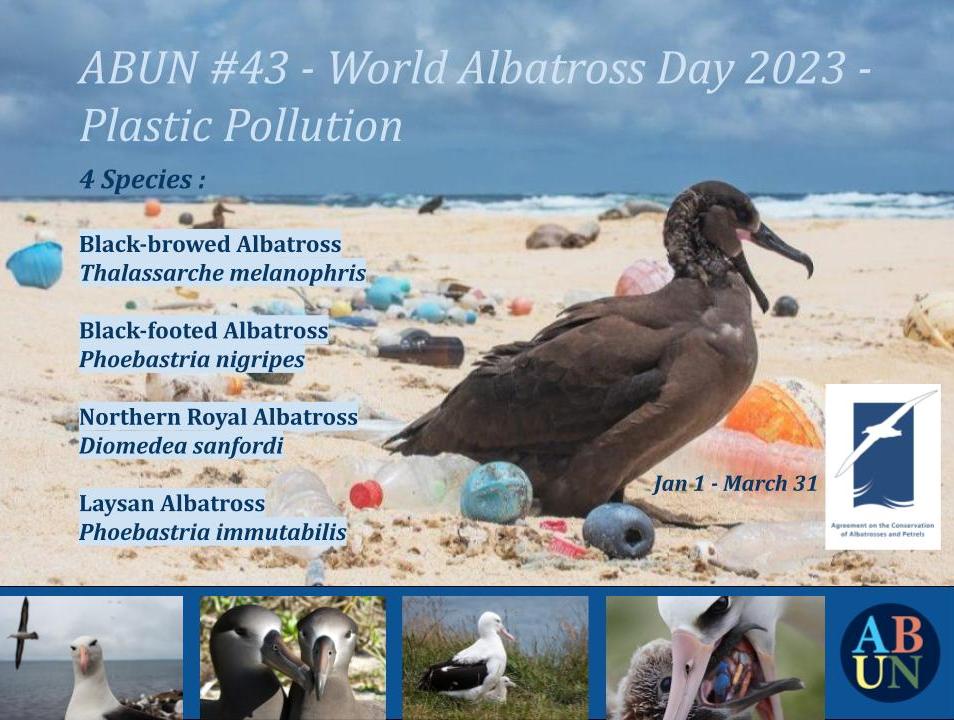
Laysan Albatrosses Phoebastria immutabilis breed among washed-up plastic litter on Midway Atoll; photograph by Steven Siegel, Marine Photobank
The Agreement on the Conservation of Albatrosses and Petrels (ACAP) has chosen “Plastic Pollution” as its theme to mark the fourth World Albatross Day, to be celebrated on 19 June 2023. Albatrosses are affected by a range of pollutants, of which plastics, whether ingested and then fed to chicks or causing entanglements, are certainly the most visible and well known to the general public. This follows the inaugural theme “Eradicating Island Pests” in 2020, “Ensuring Albatross-friendly Fisheries” in 2021 and “Climate Change” in 2022.

Once more Artists and Biologist Unite for Nature (ABUN) will support ‘WAD2023’ with its artworks. Project No. 43 commences on 1 January and will run for three months until 31 March. It will concentrate on four species of albatrosses severely affected by ingesting and becoming entangled by plastics. Over 80 photographs of the four showing them in their natural habitats, but also affected by plastic pollution, have been made available to ABUN artists for inspiration via an ABUN Facebook album.

ABUN Co-founder, Kitty Harvill writes to ACAP Latest News: “I'm certainly looking forward to working with ACAP in support of World Albatross Day once again. I’m hoping -for some powerful artworks to highlight this enormous problem for albatrosses and other seabird species. We will do our best to motivate our artists to get involved and participate. I know everyone looks forward to our albatross projects.”
 A 500-ml plastic bottle found in the stomach of a Southern Royal Albatross Diomedea epomophora (click here); photograph from the New Zealand Department of Conservation
A 500-ml plastic bottle found in the stomach of a Southern Royal Albatross Diomedea epomophora (click here); photograph from the New Zealand Department of Conservation
Two new albatross species will be used to feature the theme for this year’s World Albatross Day, with ABUN artworks and a music video, as well as with posters and infographics. These will be the globally Endangered Northern Royal Albatross D. sanfordi, endemic to New Zealand, and the abundant and widespread Black-browed Albatross Thalassarche melanophris. In addition, coverage will once again be given to last year’s two featured species, the Black-footed Phoebastria nigripes and Laysan P. immutabilis Albatrosses of the North Pacific, which ingest more plastic than do the southern hemisphere species.

A beached juvenile Black-browed/Campbell Albatross entangled by a plastic string attached to a balloon, Dolphin Point, New South Wales, Australia (click here); photograph from Karen Joynes
With grateful thanks to the many photographers wo have made their pictures freely available for use by ACAP in the cause of albatross conservation.
John Cooper, Emeritus Information Officer, Agreement on the Conservation of Albatrosses and Petrels, 01 January 2023

 English
English  Français
Français  Español
Español